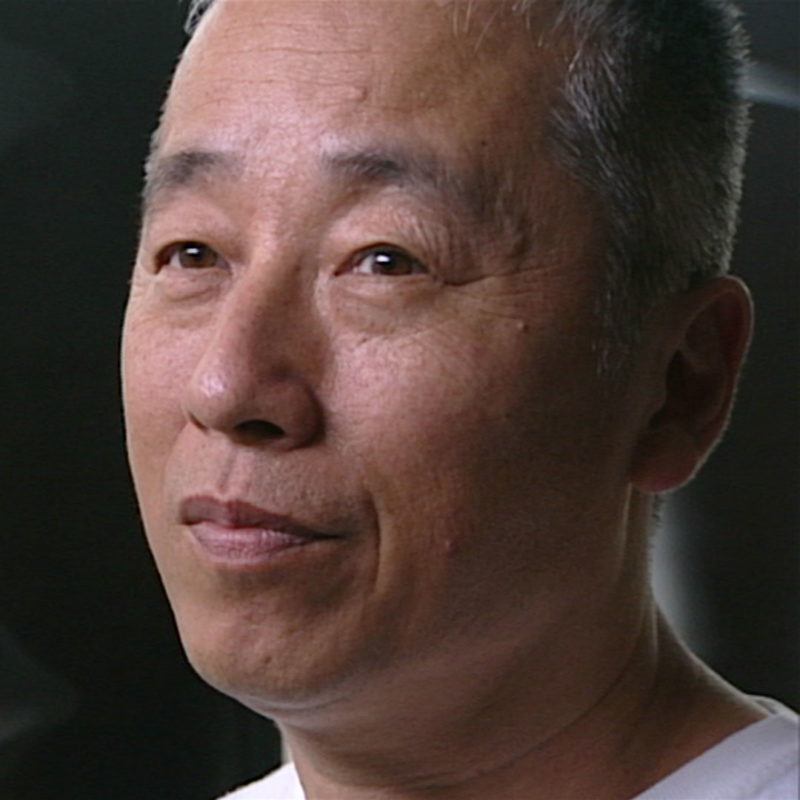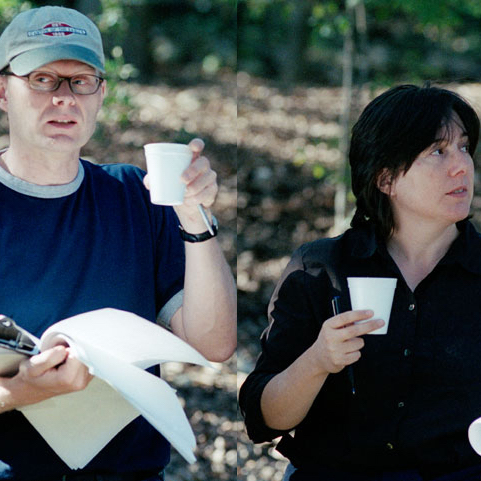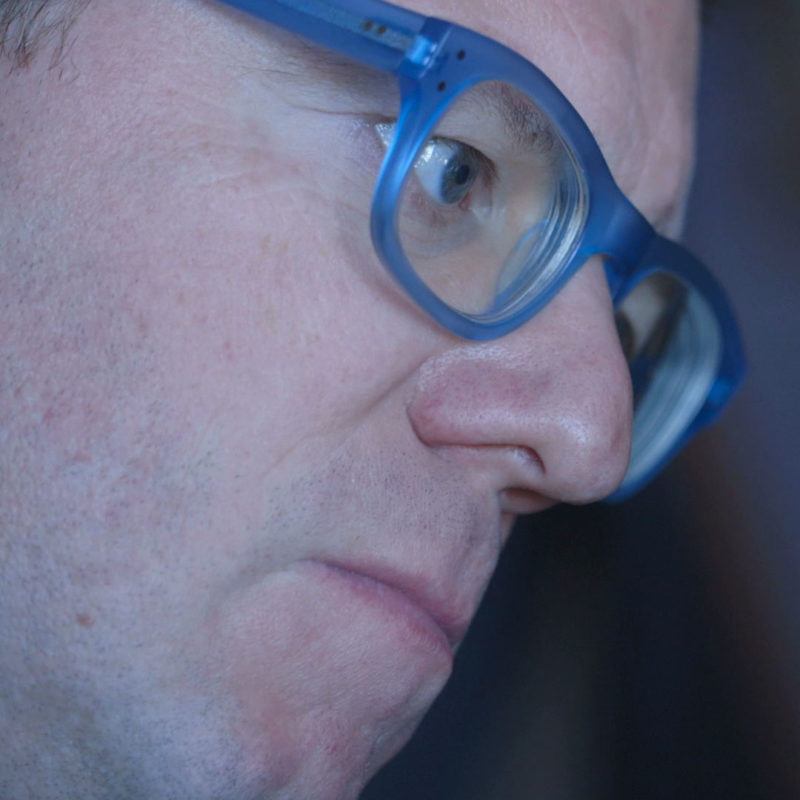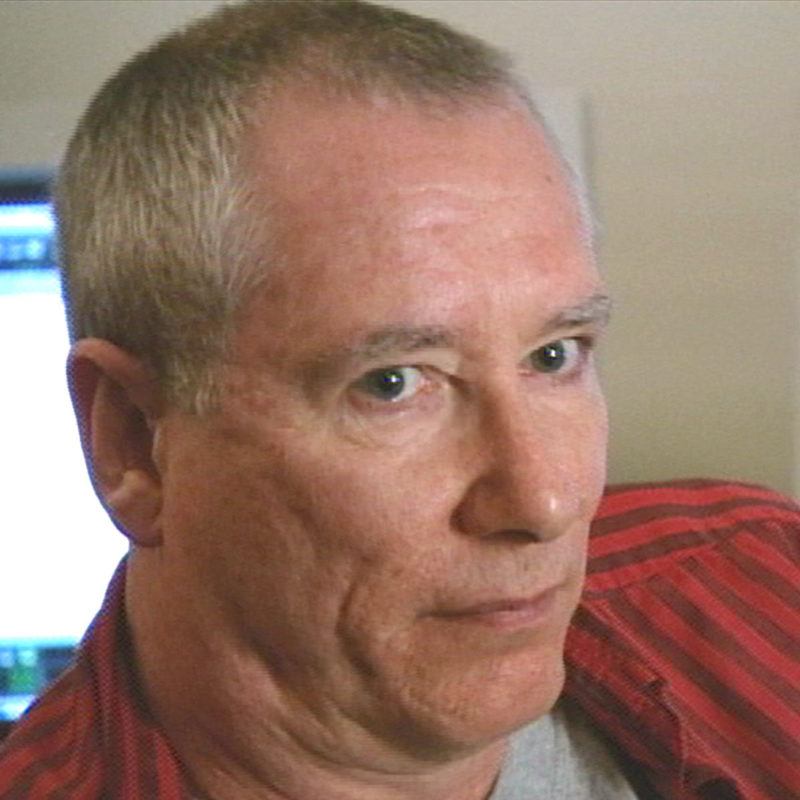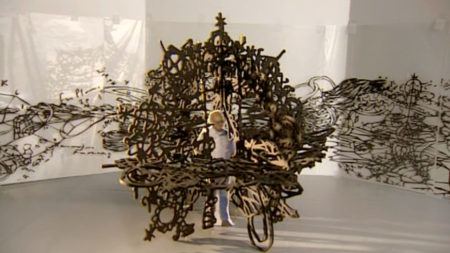Continue playing
(Time remaining: )
Play from beginning
Continue playing "{{ controller.videos[controller.getVideo(controller.currentVideo)].segmentParentTitle}}"
{{controller.videos[controller.getVideo(controller.currentVideo)].title}} has ended.
Memory
Whether critical, irreverent, or introspective, the artists in Memory delve into personal memory and the past, transforming them in their work. The artists wrestle with complex topics such as the veracity of history, the nature of interpretation, subjective versus objective truth, and the ways in which objects and images from the past embody cultural memory. Introduced by actor Isabella Rossellini, Memory is shot on location in Galisteo, New Mexico; Los Angeles, California; Paris, France; New York, New York; Chicago, Illinois; and Austin, Texas.
More information and creditsCredits
Created by: Susan Sollins & Susan Dowling. Executive Producer & Curator: Susan Sollins. Series Producer: Eve-Laure Moros Ortega. Associate Producer: Migs Wright. Assistant Curator: Wesley Miller. Production Manager: Alice Bertoni. Production Coordinator: Kelly Shindler. Producer: Charles Atlas. Editor: Lizzie Donahue. Host: Isabella Rossellini. Director of Photography: Takahisa Araki, Norbert Arnsteiner, Martial Barrault, Kurt Branstetter, Bob Elfstrom, Mead Hunt, Nancy Schreiber, Joel Shapiro, & Dyanna Taylor. Sound: Tom Bergin, Ray Day, Lori Dovi, Jim Gallup, Stacy Hruby, Gary Silver, Jean-Pierre Vial, Ullrich Vlasak, & Merce Williams. Gaffer: Todd Csernecky, Lamar Bloodworth, Ted Hayash, & Mike Lamb. Grip: Michele De Lorimier & Darryl Miller. Assistant Camera: Sean Brown, Marie Chao, Brian Hwang, Kipjaz Savoie, Dave Wightman, Lievan van Hulle, & Yahia Zadek. Production Assistant: Xavier Ballandras, Larry Fojtik, Michaela Hoeck, Kathy Kniss, Justin Leitstein, Mary Jo Mauro, Alexei Van Mourik, Scott Resnick, & Rob Zalkind. Assistant Avid Editor: Robert Achs, Jamie Courville, Sean Frechette, Mike Heffron, David Kreger, Cara Leroy O’Connell, Joaquin Perez, Aaron Sheddrick, & Lynn True. Still Photography: Alice Bertoni & Bob Elfstrom.
Creative Consultant: Ed Sherin. Art Design & Animation: Open, New York. On-Line Editor: Don Wyllie & Frame:Runner NYC. Composer: Peter Foley. Voice-Over Artist: Jace Alexander. Sound Editing: Margaret Crimmins, Greg Smith, & Dog Bark Sound. Sound Mix: Tony Volante & Sound Lounge. Animation Stand: Frank Ferrigno & Frame:Runner NYC. Introductory Host Segments Created by: INTERspectacular. Commissioned Video Art by: Teresa Hubbard / Alexander Birchler.
Artworks Courtesy of: Mike Kelley; Josiah McElheny; Susan Rothenberg; Hiroshi Sugimoto; © 2005 Susan Rothenberg / Artists Rights Society (ARS), New York; © 2005 Artists Rights Society (ARS), New York / ADAGP, Paris / Succession Marcel Duchamp; Des Moines Art Center; Electronic Arts Intermix; Jablonka Galerie, Köln; Metro Pictures, New York; Sperone Westwater, New York; & Donald Young Gallery, Chicago. Archival Footage Courtesy of: Artist Network Pictures/Takahisa Araki.
Special Thanks: Gen Aihara; The Art21 Board of Trustees; Tatiana Bliss; Hervé Chandès; Linda Chenit; Fondation Cartier pour l’art contemporain; Curious Pictures; Michael Davis Stained Glass; Bernhard Fleischer; Martha Friedman; Andrea Hall; Achim Hochdörfer; Miani Johnson; Norman Keyes; Tomoko Kimata; Dominic Mercier; Michelle Menotti; Museum of Modern Art, New York; Museum Moderner Kunst Stiftung Ludwig Wien; Karen Polack; Grazia Quaroni; Philadelphia Museum of Art; Anders Rydstedt; Soundtrack F/T; Gregg Stanger; Mary Clare Stevens; Jennifer Tobias; Valley Plaza Recreation Center, North Hollywood; & Lisa Williamson.
Director of Education & Outreach: Jessica Hamlin. Director of Development: Kathi Pavlick. Development Associate: Sara Simonson.
Interns: Susan Agliata, Nathan Townes-Anderson, Hannah Blumenthal, Agnes Bolt, Lisa Charde, Mary Chou, Kate Crawford, Amanda Donnan, Sophie Dunoyer de Segonzac, Suzy Foster, Jules Gaffney, Katie Hen, Heather Hughes, Adam Krakowski, Georgia Kung, David Mark Kupperberg, Maiko Kyogoku, Phil Logan, Lisa Margulies, Michelle Maydanchik, Carla Meyers, Christine Miller, Geoffrey Pan, Sujay Pandit, Jihan Robinson, Jennifer Sarkilahti, Megan Scally, Karen Seapker, Greg Shilling, Sarah Sliwa, Jennifer Smith, & Elizabeth Swift.
Public Relations: Kelly & Salerno Communications. Station Relations: De Shields Associates, Inc. Legal Counsel: Albert Gottesman. Bookkeeper: Marea Alverio-Chaveco & William Handy.
Major underwriting for Season 3 of Art in the Twenty-First Century is provided by National Endowment for the Arts, PBS, Agnes Gund and Daniel Shapiro, Nathan Cummings Foundation, Corporation for Public Broadcasting, Jon and Mary Shirley Foundation, Bagley Wright Fund Bloomberg, The Horace W. Goldsmith Foundation, JPMorgan Chase, Melva Bucksbaum and Raymond Learsy, The Paul G. Allen Family Foundation, and The Andy Warhol Foundation for the Visual Arts.
Closed captionsAvailable in English, German, Romanian, Italian, Japanese, Korean, Chinese, Italian
Through the Art21 Translation Project, multilingual audiences from around the globe can contribute translations, making Art21 films more accessible worldwide.
Interested in showing this film in an exhibition or public screening? To license this video please visit Licensing & Reproduction.
Central to Hiroshi Sugimoto’s work is the idea that photography is a time machine, a method of preserving and picturing memory and time. Sugimoto sees with the eye of the sculptor, painter, architect, and philosopher. He uses his camera in a myriad of ways to create images that seem to convey his subjects’ essence, whether architectural, sculptural, painterly, or of the natural world. He places extraordinary value on craftsmanship, printing his photographs with meticulous attention and a keen understanding of the nuances of the silver print and its potential for tonal richness—in his seemingly infinite palette of blacks, whites, and grays.
Teresa Hubbard and Alexander Birchler live and work in Austin, Texas, as life partners and artist-collaborators. Together they make short films and photographs about the construction of narrative time and space, without the context of a traditional story line; their open-ended, enigmatic narratives elicit multiple readings. They began their collaboration in the mid-1990s, making sculpture, installation, photography, and performance-based work. Their interest in the construction and negotiation of space, architecture, and the function of objects in three dimensions plays a primary role in their work. Their productions reveal a strong sense of carefully constructed mise-en-scène that owes as much to natural-history-museum dioramas as to cinematic directorial techniques.
Josiah McElheny creates finely crafted, handmade glass objects that he combines with photographs, text, and museological displays to evoke notions of meaning and memory. Whether recreating miraculous glass objects pictured in Renaissance paintings or modernized versions of non-extant glassware from documentary photographs, McElheny’s work takes as its subject the object, idea, and social nexus of glass. Influenced by the writings of Jorge Luis Borges, McElheny’s work often takes the form of “historical fiction”—which he offers to the viewer to believe or not. Part of McElheny’s fascination with storytelling is that glassmaking is part of an oral tradition, handed down generation to generation, artisan to artisan.
Mike Kelley’s work ranges from highly symbolic and ritualistic performance pieces to arrangements of stuffed-animal sculptures, to wall-size drawings, to multi-room installations that restage institutional environments (schools, offices, zoos), to extended collaborations. His work questions the legitimacy of “normative” values and systems of authority, and attacks the sanctity of cultural attitudes toward family, religion, sexuality, art history, and education. He also comments on and undermines the legitimacy of the concept of victim or trauma culture, which posits that almost all behavior results from some form of repressed abuse. Kelley’s aesthetic mines the rich and often overlooked history of vernacular art in America, and his practice borrows heavily from the confrontational, politically conscious, “by all means necessary” attitude of punk music.
Susan Rothenberg’s early work—large acrylic, figurative paintings—came to prominence in the 1970s New York art world, a time and place almost completely dominated and defined by Minimalist aesthetics and theories. Rothenberg’s paintings since the 1990s reflect her move from New York to New Mexico, her adoption of oil painting, and her new-found interest in using the memory of observed and experienced events as an armature for creating a painting. These scenes excerpted from daily life, whether highlighting an untoward event or a moment of remembrance, come to life through Rothenberg’s thickly layered and nervous brushwork.
“To me photography functions as a fossilization of time.”
Hiroshi Sugimoto

